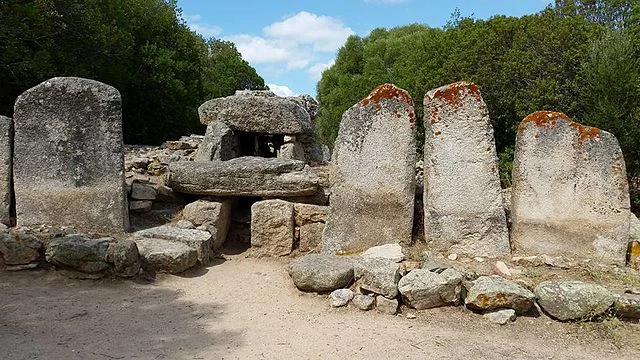The Giants’ grave of Su Mont’e s’Abe is an archaeological site located in Sardinia, Italy. This type of monument is associated with the Nuragic civilization, which thrived from approximately 1800 BC to 238 BC. These structures were used as collective burial sites, with their size and form inspiring the name “Giants’ grave.” The Su Mont’e s’Abe site is one of the better-preserved examples of these tombs.
Get your dose of History via Email
Structure and Design

The Giants’ grave of Su Mont’e s’Abe features a typical layout for Nuragic burial sites. It includes a central burial chamber, which is elongated, and a large stone stele at the entrance. The stele, often considered a marker, is flanked by rows of smaller stones arranged in a semicircular shape, forming an exedra. The design indicates its use for communal burial, rather than for individual burials.
This structure is characteristic of the Nuragic people’s architectural ingenuity. They used large stone slabs (often referred to as megaliths) to construct these monumental tombs. The burial chamber was covered with earth, creating a mound-like appearance.
Historical Significance
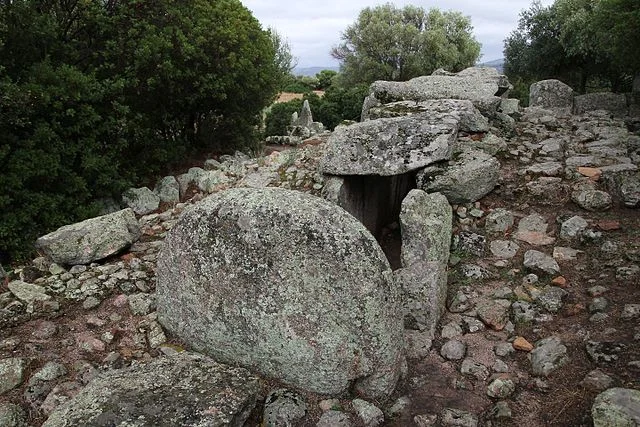
The Nuragic civilization, which built the Giants’ grave of Su Mont’e s’Abe, was one of the most important ancient cultures in Sardinia. The tombs were likely used to bury important members of Nuragic society. They also served a ceremonial purpose. The size and communal nature of the tombs suggest the existence of a society that valued collective burial and ritual practices.
The site helps archaeologists better understand the social and religious aspects of Nuragic life. The Giants’ graves are unique to Sardinia, and their specific architectural style does not appear in the same form elsewhere in the Mediterranean.
Excavations and Discoveries
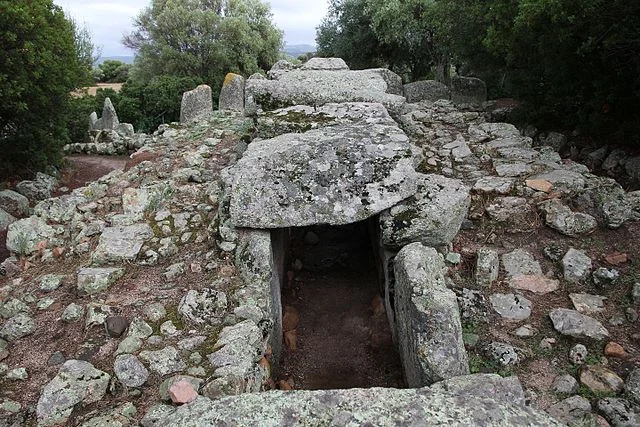
Excavations at the Giants’ grave of Su Mont’e s’Abe have uncovered human remains, pottery, and other burial offerings. These findings provide insights into the burial customs of the Nuragic people. Archaeologists found evidence of multiple burials within the tomb, confirming its role as a communal burial site.
Radiocarbon dating has placed the construction of the Su Mont’e s’Abe tomb within the early Bronze Age, around 1800 BC. The presence of grave goods, such as pottery fragments and stone tools, points to a belief in an afterlife. The items buried with the deceased suggest that the Nuragic people thought these offerings would be useful in the next world.
Interpretation and Cultural Context
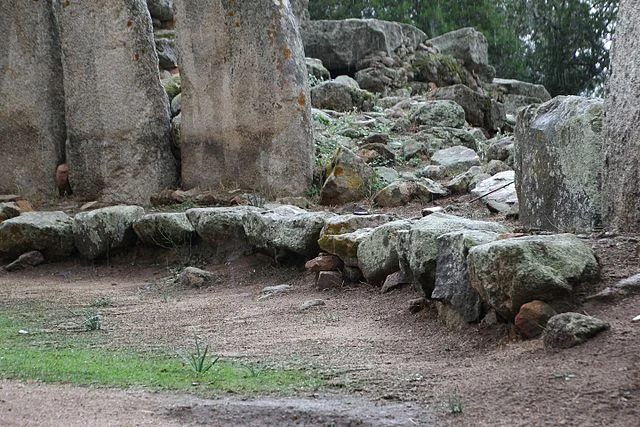
The Giants’ grave of Su Mont’e s’Abe is part of a broader network of Nuragic monuments spread across Sardinia. This structure provides a glimpse into the spiritual beliefs of the Nuragic people. The monumental scale of these tombs, as well as their complex design, indicates that they held great importance in the society’s religious and ceremonial life.
The name “Giants’ grave” comes from local legends, which claim that giants were once buried there. While there is no evidence to support these stories, the impressive size of the tombs likely fueled such myths. Today, the site attracts visitors interested in Sardinia’s rich prehistoric past and the unique culture of the Nuragic civilization.
Preservation and Accessibility
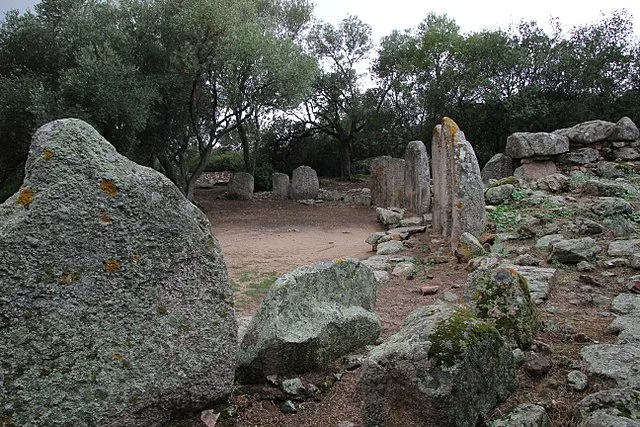
The Giants’ grave of Su Mont’e s’Abe is well-preserved compared to other similar sites. Efforts to maintain the structure and its surrounding area have helped ensure its continued study. The tomb is accessible to visitors, and it serves as a significant tourist attraction for those interested in ancient Sardinian history.
Archaeologists continue to study the site, hoping to uncover more information about the Nuragic people and their burial customs. The grave remains an important example of Sardinia’s prehistoric heritage.
Source:

